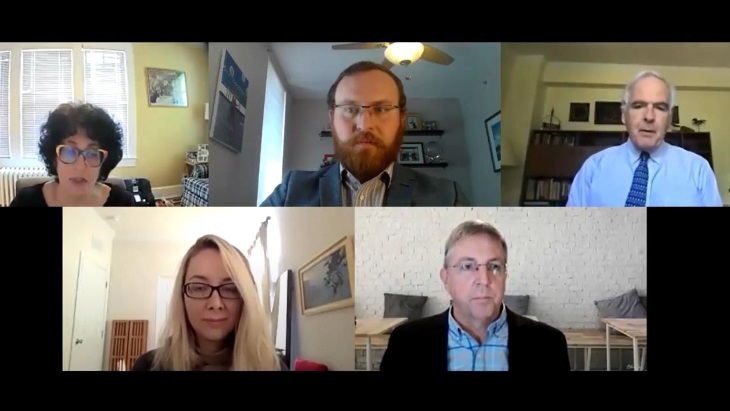The NIA describes itself as a non-profit 'think-and-do-tank' working to enable nuclear power as a global solution to mitigate climate change. Its new report - Unlocking Advanced Nuclear Innovation: The Role of Fee Reform and Public Investment - explores the history of the fee system, identifies how the fee model can inhibit advanced nuclear innovation, and makes comparisons with regulatory models in other industries and countries. It includes recommendations to strengthen the NRC, reduce barriers for advanced reactor applicants and ensure advanced reactors can provide a timely contribution to climate mitigation.
The report finds that the NRC's current fee system "poses a barrier" to advanced nuclear innovation in two main ways. Firstly, it limits NRC's resources, flexibility and efficiency, a situation made worse by the fact its budget has declined by more than 30% since the mid-2010s owing to plant retirements and reduced application activity. Secondly, the open-ended costs associated with paying fees impose barriers to new entrants, since licence applicants must pay NRC fees before they begin earning revenues. Fee reform is especially important in the short term, the report says, as the "inefficiency" of current NRC regulations leads to higher fee expenses for near-term applications by first movers.
Recommendations
The NIA recommends that Congress: significantly reforms, modifies or replaces the licensing fee cost recovery model to exclude or substantially reduce fees for new licence applicants at NRC; alternatively, expands options for Department of Energy funding of advanced reactor licensing; and expands funding for advanced reactor regulatory infrastructure.
The NIA also recommends that the NRC take several actions to reduce the negative impacts of the fee model on nuclear innovation. Firstly, the NRC should expand the definition of activities that can be funded as advanced reactor regulatory infrastructure and seek additional funding for these activities. Secondly, the NRC should evaluate what it can do with existing authorities to defer fee collection or otherwise reduce the impacts of fees on new reactor licence applicants. More broadly, the NRC funding model should be re-evaluated to ensure that it is consistent with US climate goals.
"While the NIA did not look at the impact of current annual fees for operating nuclear power plants, the time is ripe to review how the fee model impacts the industry’s overall competitiveness, domestically and internationally," the report says.
Timely debate
The report was discussed in a webinar yesterday by Alex Gilbert, NIA project manager and lead author of the report; Caroline Cochran, co-founder and COO of Oklo, which is developing the Aurora "advanced fission power system"; and Peter Hastings, vice president of regulatory affairs and quality at Kairos Power, which is developing fluoride salt-cooled small modular reactor technology. The webinar was moderated by former NRC commissioner Stephen Burns, who is a senior fellow at Third Way, a national think tank that "champions modern centre-left ideas".
Opening the event, NIA Executive Director Judi Greenwald described the International Energy Agency's recently published report, Net Zero by 2050: A Roadmap for the Global Energy Sector, as "just the latest careful analysis demonstrating that we need nuclear energy to meet mid-century climate targets". She added: "Advanced reactors are a promising solution that could play a major role in decarbonisation but they need more policy and investment."
Burns said the new NIA report draws attention to how the NRC's fee model can influence its ability to carry out its regulatory programme "because there is a relative inflexibility with respect to funding that is otherwise provided by applicants for licences or reviews".
"When you had the initial licensing and the initial development of the current fleet in the 1960s into the 1970s, you basically had a very low fee structure," he said. "And so the question is, how do we model that today, or do we model that prior experience today, as providing a greater incentive to innovation."
Gilbert said the fees structure had to be seen as part of a much larger picture of regulatory modernisation at NRC. "If you change this part of how NRC works, then you'd have to change other parts as well, including its organisational structure and management," he said. "The conversation started with the Nuclear Energy Innovation and Modernisation Act (NEIMA) several years ago and we see this discussion as the next step. We're at an inflection point here in the United States and this calls for reform."
NEIMA is one of several bipartisan bills that support advanced nuclear innovation considered by the 115th US Congress, which ended on 2 January 2019. These are: the Nuclear Energy Innovation Capabilities Act (NEICA); the Nuclear Energy Leadership Act; the Nuclear Utilisation of Keynote Energy Act; the Advanced Nuclear Fuel Availability Act; and legislation to expedite so-called part 810 approvals, which are needed for the export of technology, equipment and components.
Gilbert said it is important "to build on the progress" of NEIMA and NEICA.
"Nuclear technology is shifting," he said, from conventional large reactors to advanced smaller reactors. "Instead of a handful of large companies, the reactor industry today has a varied composition and the NRC is shifting from prescriptive-based to performance-based licensing."
The current fee model consists of two elements: 10 CFR Part 170 (hourly fees and includes new licence applicants, among others) - which is a discrete value of just under USD300/hour; and 10 CFR Part 171 (annual fees for existing licencees) - from where the majority of the NRC's budget comes from. CFR stands for Code of Federal Regulations.
From 1990, the NRC was required to source 100% of its budget from fees, and that was reduced to 90% in the 2000s. In 2019, NEIMA changed that system to a fee and off-fee approach.
The cost of innovation
Cochran said that Oklo began "paid interactions" with the NRC in 2016. Since then, the lowest rate that it paid and the lowest rate proposed this year for hourly fees has risen by 10%.
"So even in this span of time, we are seeing swings that are substantive," she said, adding that the fee structure "hamstrings" NRC staff themselves. "By having the need to recoup fees but also to budget years in advance, developers like us, as well as the staff working with them, are kind of caught between a rock and hard place. Not only do we have to pay for all of it, but it has to be budgeted years in advance and approved by Congress … Whether it's 90% or 100% it's a challenging system and it's something that affects all of us who are doing hourly work.
"Annual fees for large operating plants rose by about USD500,000 for 2021, so we're definitely seeing fees going in the wrong direction if we want to encourage innovation in this space. We also don’t think that each plant closure should increase the burden on the plants that are left."
Oklo, a privately funded company, paid USD1 million in fees to the NRC last year. Cochran also referred to the barrier presented by the "timelag" in federal budgeting and the time it takes to work out with NRC staff how much the regulatory cost will be, which is on top of the actual cost. She highlighted that the total NRC budget is "not immense", at about USD1 billion a year.
Kairos, also a private company, is just four years old but has already spent about USD2 million on NRC fees. All its costs, including the acquisition of test sites have been "on our nickel", Hastings said.
It has been involved in pre-application engagement for the last 2.5 years. This process is "entirely optional", he said, but will pay dividends in the form of a more efficient review of the application itself.
"We are fully committed and have stable private funding in the near term with very good prospects for future funding; we're very active in pre-application engagement and iterative development of our own test platforms, with a clear motivation to innovate and reduce programmatic risk in the furtherance of our mission to enable the world's transition to clean energy. If we weren't well-funded but still had the kinds of innovations that we bring to bear, then the cost of that engagement could clearly constitute a significant barrier to entry."
He added; "We're USD2 million down the road with NRC fees, but the formal application review hasn't started and that will generate plenty of additional NRC invoices in the future. It's important to note that this is for a demonstration platform that will not generate a dollar of revenue."
Moving pre-application and application expenses "off-fee" in some way could stimulate innovation, he said.
"Clearly it would make sense to balance that approach with some protection, to ensure the NRC isn’t inundated with frivolous applications, or with engagements that are intended primarily to act as a market. And it's essential that moving these costs off-fee does not adversely impact the operating fee, but removing the barrier to entry could be a useful way to encourage advances in technology."
Benefits to the public
Burns asked a question received from among the webinar's audience - What would public investment in NRC look like?
Gilbert said: "Congress appropriates the funding for NRC. That appropriation in itself would probably not change significantly. Rather, what would happen is that, instead of getting that appropriation matched to a cost recovery, this would come from the general treasury. In that sense, it would ultimately come from the taxpayer, just like we pay for the Environmental Protection Agency (EPA) and many other types of safety regulators out there.
"On the benefit to taxpayers, these are normally projects with high economic multipliers. So, to the degree that we can encourage them, we can create economic activities that would pay those tax incomes themselves over time. It's net-balance-of-treasury accounting."
Burns asked how government funding of a vendor for regulatory fees would benefit the public, since the NRC's sole "product" is a document, a certification of a design.
Like Gilbert, Hastings made a comparison with the EPA. "It's true that the NRC doesn’t produce anything other than documents, but those documents are an absolute pre-requisite to deploying the technology. The public benefit of a low-carbon baseload technology won’t exist without the licensing actions and so there's a clear benefit [to them]. The fact that it's one step removed is sort of academic."
A recording of the webinar is here.





_34792.jpg)
_16403_79272.jpg)



_76087_55556.jpg)



